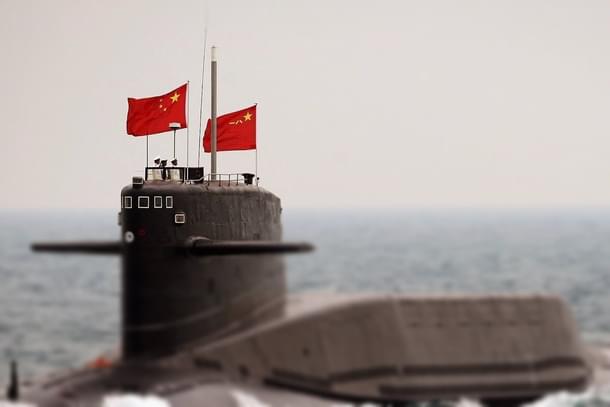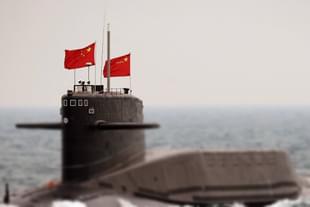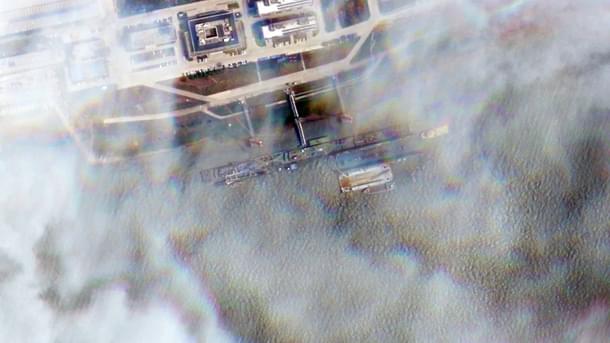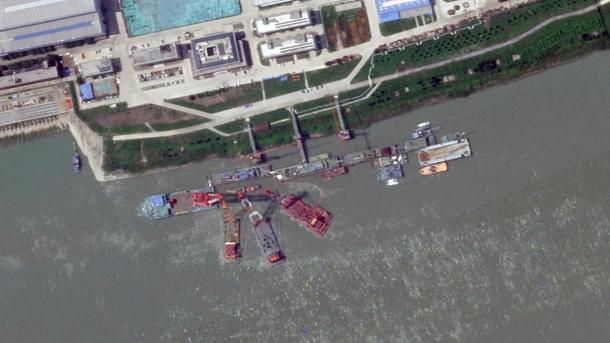Defence
Sinking Of China's Nuclear Submarine May Hurt Its Pride, But It Is Unlikely To Dent Its Maritime Ambitions
Ujjwal Shrotryia
Sep 27, 2024, 06:13 PM | Updated 06:13 PM IST
Save & read from anywhere!
Bookmark stories for easy access on any device or the Swarajya app.


In an embarrassing situation for China, its latest nuclear-attack submarine (SSN) reportedly sank at its pier.
Although the exact time and date of the sinking are not known, judging from satellite imagery accessed by Swarajya, the SSN sank sometime between May and June 2024.
The nuclear attack submarine, which the United States Department of Defense (DoD) says belonged to its newest class of nuclear-powered submarines — the Zhou class — was under construction by the state-owned China State Shipbuilding Corporation (CSSC) located on the Yangtze River outside the city of Wuhan.

Not much is known about why the new Zhou-class submarine sank and its capabilities, except that it features an X-type stern that allows for increased manoeuvrability and efficiency in shallow waters.
Satellite images suggest that it sank while being at the fitting-out stage, followed by the sudden appearance of four barges between 12 June and 17 June that were presumably used to lift the submarine out of the water.

Chinese top officials have refused to comment on the incident, which is likely an attempt to cover up this massive incident. Whether any sailors or construction workers died is not known either.
This marks a blot on the capabilities, training, and procedures of the People's Liberation Army Navy (PLAN), and shatters its pride.
This also highlights the widely prevalent corruption in China's defence manufacturing industry.
Earlier this year, several high-ranking officers of its strategic rocket forces were purged by President Xi Jinping due to corruption. It was reported by Bloomberg that its ballistic missiles were filled with water instead of fuel, and there were issues in opening the lids of missile silos.
However, despite this setback, this incident is unlikely to put a dent in PLAN's maritime ambitions.
China already has the world's largest navy, with a fleet of 370 ships or more, surpassing the US's 299-odd vessels. Moreover, it is building destroyers, frigates, submarines, and aircraft carriers at a faster rate than ever.
Just a week ago, all of its three aircraft carriers — the Liaoning, Shandong, and the Fujian — were put out at sea simultaneously, demonstrating its rapid pace of shipbuilding, with more flat-top carriers under construction.
China has naval bases from both the western edge (naval base in Djibouti) to the eastern edge (Ream naval base in Cambodia) of the Indian Ocean. It regularly sends out patrols in the Indian Ocean.
Additionally, it intimidates smaller nations like the Philippines, Taiwan, and Vietnam in the South China Sea (SCS) with its larger navy. Recent ramming incidents of Philippine Navy and Coast Guard ships in the SCS are prime examples.
A former Indian Navy chief has stated that by the end of this decade, PLAN will have a permanent presence in the Indian Ocean.
And the rapid pace of expansion does not look to slow down.
They are producing more capable and complex ships at an even faster rate than before, and this sinking incident does not look to slow down its maritime ambitions. Its obvious target is to challenge the United States on the high seas (read: the Pacific) and India in the Indian Ocean.
Therefore, it is imperative for India to invest in expanding its fleet size and on surveillance assets like P-8I Neptune and MQ-9B drones, but also on its island territories in Andaman and Nicobar Islands and Lakshadweep.
Staff Writer at Swarajya. Writes on Indian Military and Defence.





